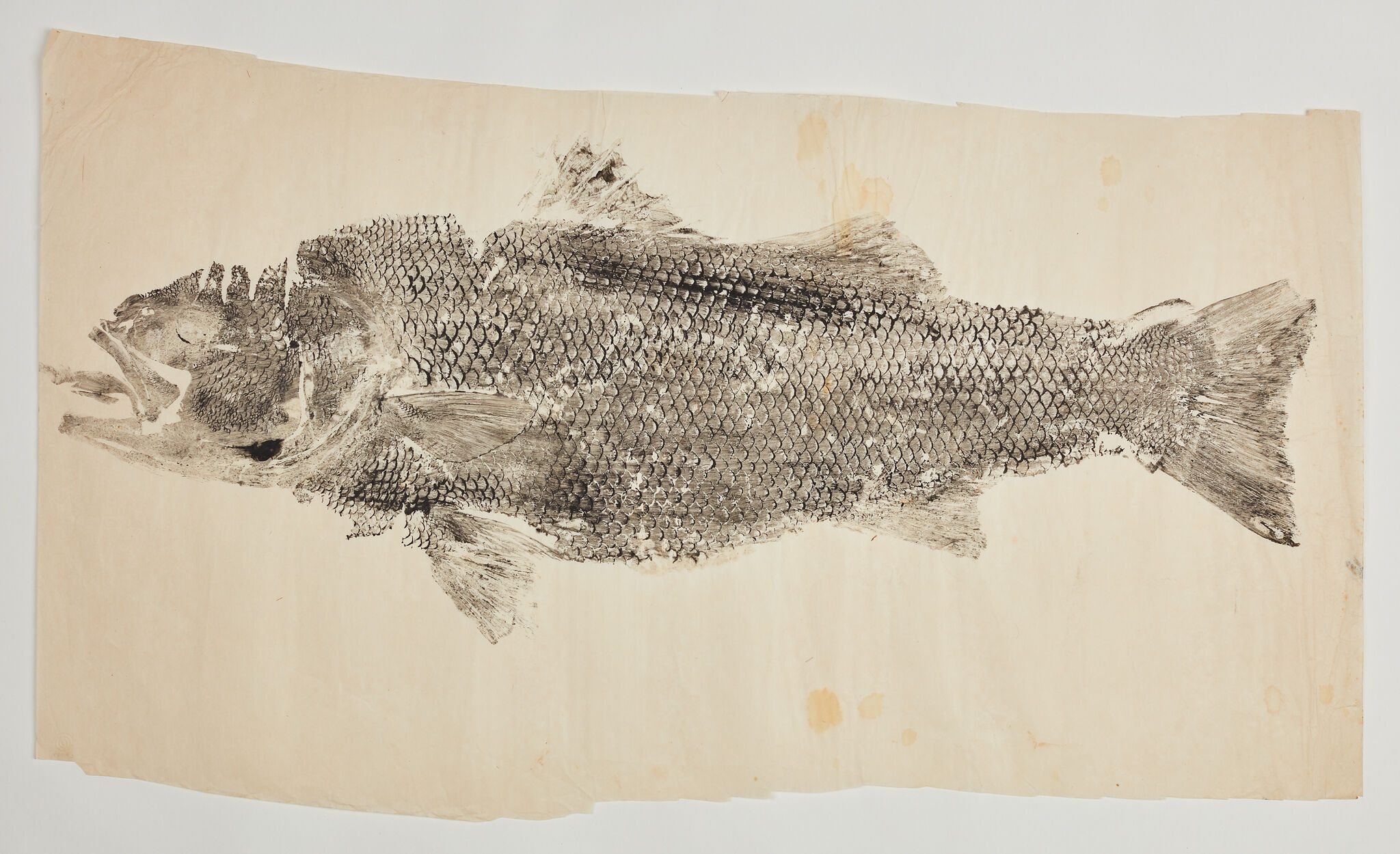Ruth Asawa Through Line | Art & Artists
Sept 16, 2023–Jan 15, 2024
Ruth Asawa Through Line | Art & Artists
Found and Transformed
2
Stemming from Asawa's material resourcefulness and penchant for scavenging, these stamped drawings show the artist testing found materials as implements for expanded mark making. The earliest examples were born from her 1948 summer job working in Black Mountain College's laundry room, where she borrowed the rubber stamps used to identify linens to create evocative abstractions.
After Asawa moved to San Francisco in 1949 to marry her Black Mountain schoolmate and architect Albert Lanier, she began to make stamps from everyday objects: bike pedals, wine corks, and apples and potatoes carved with her own designs. Later works show her creating a simple record of an object, often a gift from one of her six children. Starting, for example, with fish caught by her son Adam or leaves gathered by her daughter Aiko, Asawa carefully transferred the impression of scales or branching veins to a blank sheet of paper, then peeled it away to reveal the object's mirror image.

